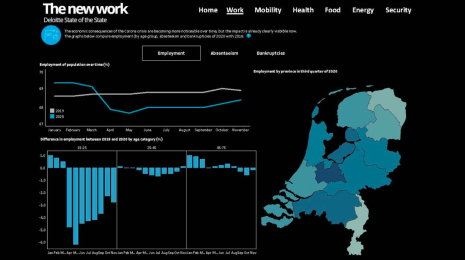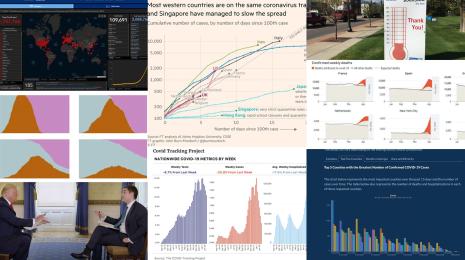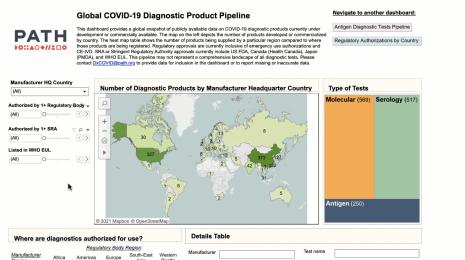Measuring employee wellness during COVID-19: What business leaders need to know
Editor’s note: Since published, we’ve updated the data source to make sure everyone has uninterrupted access to the latest data. Learn more about the latest data source.
It’s clear that we’ve entered an era of extraordinary, rapid change. The COVID-19 pandemic has challenged all of us to learn how to adapt, quickly, learning as we go. The stakes are high. Businesses are facing loss of revenue, financial uncertainty, and supply chain stresses, not to mention creating contingency plans for economic disruption. How organizations large and small weather the storm depends on numerous factors, yet as business leaders struggle to regain their footing in an ever-shifting landscape, they can’t forget their most valuable asset: their employees.
The pandemic has not only upended business as usual. It’s deeply affected the mental well-being of every employee, from those risking their lives as frontline healthcare providers, to those for whom “working from home” is not an occasional perk, but now an isolating, everyday occurrence. As stress levels increase, it becomes more difficult for employees to focus on their work, making it essential for employers to understand where people are struggling, and proactively provide support to help them adapt to change.
It’s important to note that unlike other types of crises, the COVID-19 pandemic is not a singular event; it’s an ongoing crisis that will be with us for the foreseeable future, so it’s difficult to estimate with any precision what kinds of mental health interventions will be needed, either in the long or short term. Forward-thinking organizations are relying on data to plan an effective - and empathetic - response.
Supporting employees’ mental health in the face of COVID-19
Mental well-being is an ongoing challenge for many, even in the best of times. In fact, the CDC notes that mental health disorders are among “the most burdensome health concerns in the United States.” But history has shown us that mental health issues are exacerbated during times of crises. According to JAMA, large-scale disasters and epidemics are “almost always accompanied by increases in depression, posttraumatic stress disorder (PTSD), substance abuse disorder” and more wide-ranging mental and behavioral disorders. Many mental health experts are already seeing marked upticks in the numbers of patients they’re treating as a consequence of pandemic-related stress, and expect those numbers to grow.
CNN reports that The Disaster Distress Helpline, operated by the federal Substance Abuse and Mental Health Services Administration, recorded a 338% increase in call volume in March, compared to February. And according to a survey conducted by Ginger, an on-demand mental healthcare provider, following the onset of COVID-19:
- 91 percent of employees working from home reported experiencing moderate to extreme stress
- 88 percent of workers reported experiencing moderate to extreme stress
- 69 percent of workers claimed this is the most stressful time of their entire professional career, including major events like the September 11 terror attacks, the 2008 Great Recession and others
- 62 percent of workers reported losing at least one hour a day in productivity due to COVID-19 related stress, with 32 percent losing more than two hours per day
Productivity lost due to mental health issues is bad for the worker, and is a growing, bottom-line concern for the business: in pre-pandemic 2019, the World Health Organization estimated that depression and anxiety cost the global economy $1 trillion per year. The impacts associated with the pandemic in 2020 are difficult to imagine.
Create a culture of wellness, built on data
It’s smart business to prioritize a wellness initiative that enables your organization to take a proactive approach to your employees’ mental health. Helping your employees to learn to cope and become more resilient is an important goal: employees who are engaged, and have high levels of well-being are 45% more likely than other employees to adapt to change.
Given the challenges of managing, nurturing, and supporting a workforce that is distracted, offsite, and possibly facing mental health challenges, how can employers begin to initiate a data-driven approach to better understand their employees’ mental health, and mitigate any potential risks that may surface in the future? How can data make a difference?
Great analyses start with good data. Surprisingly, however, 31% of companies aren’t using any data analytics to inform and drive corporate health and well-being strategy. But with the right data, you’re able to measure what matters most to your organization, and develop a robust picture of where your team needs the most support. Common wellness metrics include:
- Basic biometric data
- Health habits (exercise, diet, sleep, and alcohol and tobacco use)
- Absentee data
- Sentiment analysis
- Pulse survey data
Visualize the mental health metrics that matter
Since there’s virtually no limit to the number of metrics that can be monitored and analyzed, it’s important to identify the aspects of mental well-being that matter the most to your organization. And measuring data that is actionable is key. As you look for data-driven solutions, focus on the metrics that are relevant to your unique culture and decision-making processes.
Metrics related to employee behavior can be a strong indicator of mental health. Using a mental health scorecard, Bell Canada is able to track over 90 KPIs for its 52,000-plus employees. The company measures progress against program objectives by analyzing metrics related to short and long term disability claims, employee engagement, benefits utilization, and more. The program has proven to be a good investment, returning a positive ROI for over seven years.
While there’s no one-size-fits-all approach to developing mental health wellness metrics for your organization, it’s important to include rich, qualitative data. Conducting periodic Health Risk Assessments (HRA) that include questions about general well-being are a great place to start, and can provide inputs that are immediately actionable. For example, Prudential Financial leverages HRA data, together with employee engagement surveys, to improve healthcare offerings, point employees to existing resources, and create benchmarks for future follow-ups.
Leading with data
With so much at stake as we take on the many business challenges created by the pandemic, one priority seems clear: it’s imperative that we leverage the power of data to improve the mental health of our workforce, and that it becomes a fundamental strategic priority.
To gain a better understanding of the impacts of COVID-19 on your organization, we invite you to download our starter dashboard and workbook. These resources will help you blend your own data with the Johns Hopkins University Coronavirus Data Stream to develop your own, custom analyses.
To learn more about mental health resources that are available to employers and employees, view this list from Mental Health America.








